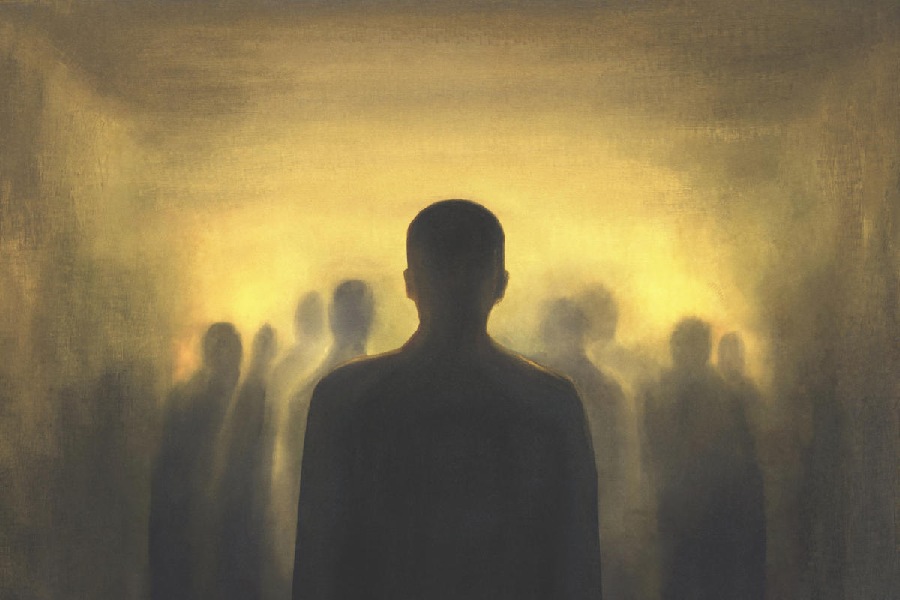Book: Age Of Vice
Author: Deepti Kapoor
Publisher: Juggernaut
Price: ₹899
An intrinsic part of Indian cosmology, albeit religious in colour, is the yuga cycle. The world moves through yugas, or cycles, and once it hits the irreparable darkness of the Kaliyuga, it strives to correct itself and revert to the beginning — the Kritayuga, or the ‘Age of Truth’ — by annihilating all agencies of Kali or vice. Deepti Kapoor’s second novel, Age of Vice, is an effort to represent this mythological belief. The novel sprawls over more than 500 pages, chronicling the lives of principally three characters — Ajay, Sunny, and Neda — all of whom hail from distinctly different tiers of the Indian hierarchy.
Our entry into the story is through the eyes of Ajay — a boy born into squalor and poverty in a village of northern India. Ajay, the eight-year-old ‘untouchable’ Valmiki boy, is accorded education at the price of being forced to sit apart from the other students during lunch to partake of his “meagre, watered down” meal. His lacklustre life turns into a waking nightmare when, for a negligible misdemeanour, he is forced to witness his father’s brutal slaughter and is then sold as a slave. Considering the trauma from which he emerges, Ajay’s life from here on only seems to improve and through his many adventures he encounters the “[t]all, imposing, charismatically handsome” Sunny Wadia, a shining beacon of hope for Ajay. Sunny offers Ajay a chance at a bigger life and Ajay, doe-eyed still, leaps at the opportunity.
Even though Sunny Wadia is the son of the godfather of Delhi capitalism, the business tycoon, Bunty ‘Himmatgiri’ Wadia, there is a touch of destiny about him, or so we are fooled into believing. Sunny is an earnest visionary, ambitious in his desire to revolutionise Delhi through his riverside project. Sunny’s heroism is amplified through the eyes of Neda Kapur. Neda is a stark contrast to Ajay. She is reared by idealistic, well-read parents who are representative of the liberal, intellectual cream of Delhi society. Even Neda, who thinks she sees through Sunny’s façade of poise, slips into admiration for him which quickly turns to love.
It is but obvious that this happy picture is bound to shatter. The Wadia empire has predictably been built on an intricate system of lies, deception and corruption. Bunty is unwilling to let this delicate structure crumble because of his foolish son’s idealism. To rid Sunny of potential threats like the delinquent Gautam Rathode or the idealistic reporter, Neda, Bunty Wadia sets up a series of unfortunate events that culminate in an unacceptably common accident — a Mercedes driven by an intoxicated, rich boy goes out of control, killing homeless labourers asleep on the sidewalk.
It is here our admiration for Sunny Wadia begins to waver. As part of Bunty Wadia’s elaborate plan, Ajay is made to take the blame for the heinous crime. Gautam Rathode is flushed out of Sunny’s life and Neda too disappears almost overnight. We keep waiting for Sunny to rise and rescue his friends but the act of valour never comes. Even when Sunny finds out Neda was carrying his child, he remains incapable of seeking revenge. Neda fades into an obscure life abroad, Ajay is offered up as bait when he is sent to kill the miscreant, Sunil Rastogi, a criminal whose presence in the novel allows Kapoor to invoke the dynamic ‘chaddi-baniyan gang’, and Sunny himself slips into a life of subjugation as his father’s puppet. His spirit of revolution is reduced to unreal dreams of a spoilt boy drunk on his father’s power. The age of vice strives to rectify itself in a flurry of action at the end, when, on the occasion of Sunny’s marriage, Bunty’s empire starts to collapse.
Kapoor strives to instil poignancy in her sketches of the characters and the result is a startling, sometimes jarring, medley of tales that struggle to sit together as an organised sequence. Her narrative attempts to be picturesque in parts while steamy, pacey and bloody in others. The irregular rise and fall in the movement of the plot make the ride bumpy. Nevertheless, the novel is riveting. We stumble, race and are rudely halted but we don’t stop until we reach the end. The destination, though, disappoints. After its sweeping saga of love, betrayal, money and crime, Age of Vice ends on a decisively tame note.










